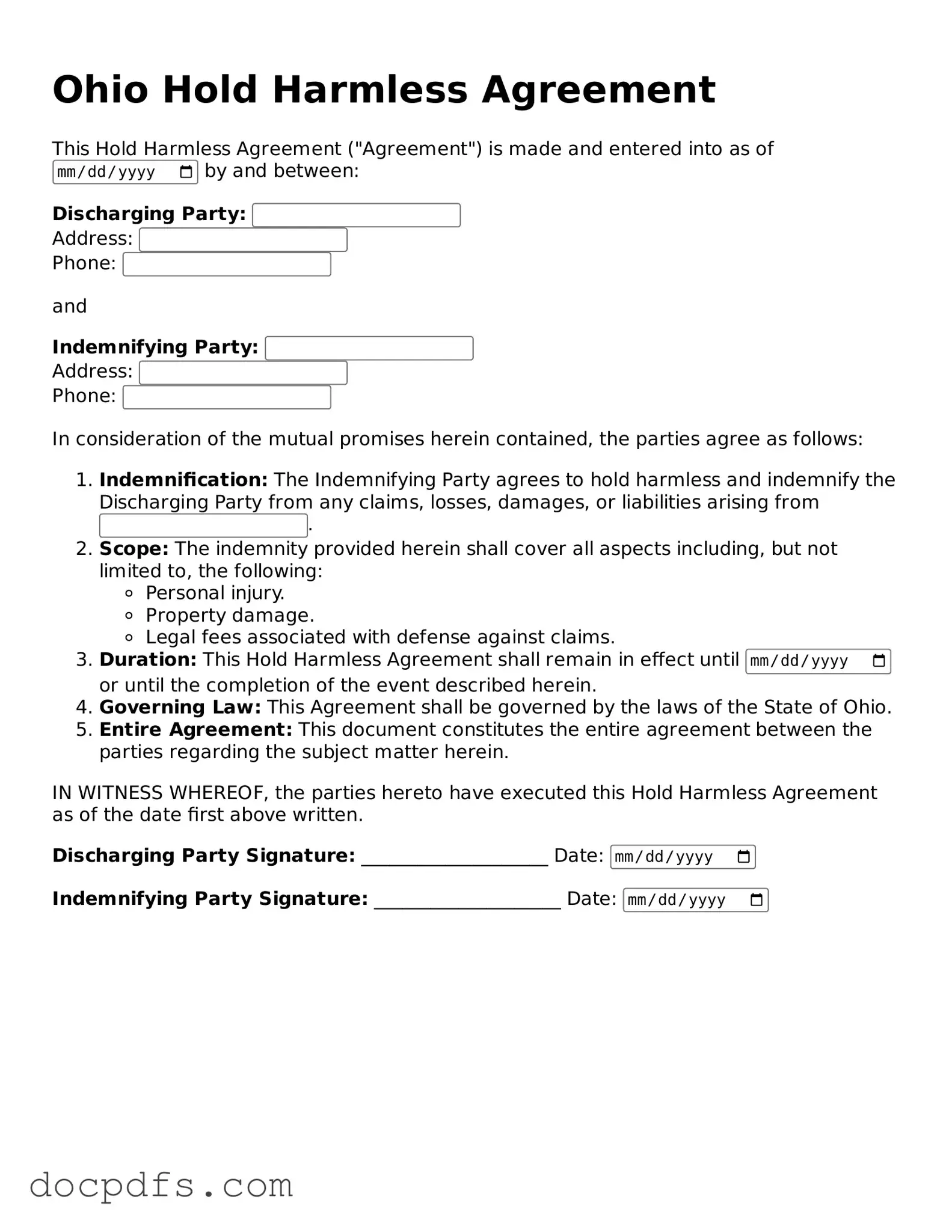What is a Hold Harmless Agreement?
A Hold Harmless Agreement is a legal document that protects one party from liability for certain risks or damages that may arise during an activity or event. Essentially, it is an understanding between two parties where one agrees to take on the risk of any potential claims or damages that may occur, thereby shielding the other party from legal responsibility.
Why would someone use a Hold Harmless Agreement in Ohio?
Individuals and organizations in Ohio often use Hold Harmless Agreements to mitigate risk. For example, if a business hosts an event and invites participants, they may require attendees to sign this agreement. This helps ensure that if an accident occurs, the business is not held liable for any injuries or damages that may happen during the event.
Who typically needs to sign a Hold Harmless Agreement?
Typically, the parties involved in an activity where risks are present may need to sign a Hold Harmless Agreement. This can include:
-
Event organizers and participants
-
Property owners and tenants
-
Contractors and clients
-
Employers and employees
By signing the agreement, each party acknowledges the risks involved and agrees to hold the other harmless from claims that may arise.
Are there specific requirements for a Hold Harmless Agreement in Ohio?
While there are no specific state-mandated requirements for a Hold Harmless Agreement in Ohio, it is important that the document is clear and comprehensive. It should include:
-
The names of the parties involved
-
A detailed description of the activity or event
-
The specific risks being assumed
-
A statement indicating that the signer understands the risks
Having the agreement in writing and signed by all parties can help ensure its enforceability in case of a dispute.
Can a Hold Harmless Agreement be enforced in Ohio?
Yes, a Hold Harmless Agreement can be enforced in Ohio, provided it meets certain legal standards. Courts generally uphold these agreements as long as they are clear, voluntary, and not unconscionable. However, there are exceptions. For instance, if the agreement attempts to waive liability for intentional misconduct or gross negligence, it may not be enforceable.
What should someone do if they are asked to sign a Hold Harmless Agreement?
If you are asked to sign a Hold Harmless Agreement, it is crucial to read the document carefully. Consider the following steps:
-
Understand the risks involved in the activity.
-
Ask questions if any part of the agreement is unclear.
-
Consider consulting with a legal professional if you have concerns about the implications of signing.
Being informed can help you make a better decision regarding your participation in the activity.
What are the potential risks of signing a Hold Harmless Agreement?
Signing a Hold Harmless Agreement can carry certain risks. By signing, you may be agreeing to take on liability for injuries or damages that could occur, even if they are not your fault. This means you might be responsible for costs associated with accidents, medical expenses, or legal fees. It is essential to fully understand what you are agreeing to before signing.
Can a Hold Harmless Agreement be revoked?
Generally, once a Hold Harmless Agreement is signed, it is binding. However, there may be circumstances under which it can be revoked or modified. For instance, if both parties agree to changes, or if there is evidence that the agreement was signed under duress or without understanding its terms, it may be possible to challenge its validity. Consulting with a legal professional can provide guidance on this matter.
